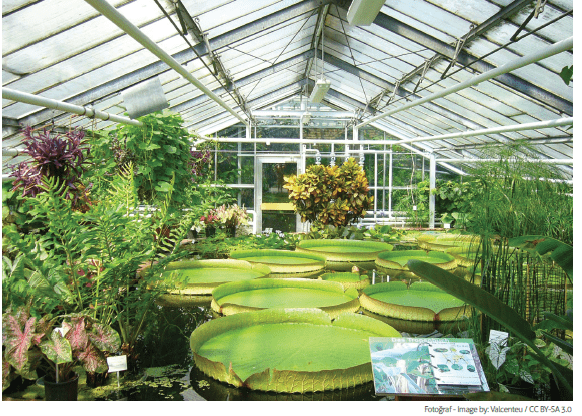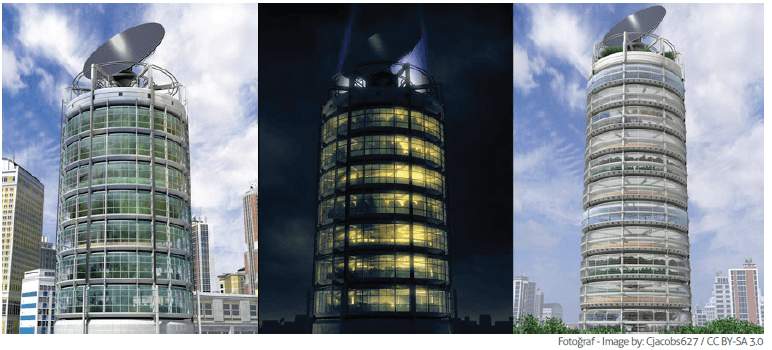Vertical agriculture means that agricultural products are grown in vertically stacked layers rather than a single level, such as fields or greenhouses, usually in environments such as a skyscraper, shipping container, or a redesigned warehouse.
By 2050, the world’s population is expected to grow by another 2 billion people, and feeding this will be a major challenge. The arable land decreases day by day due to factors such as global warming, urbanization, pollution and industry.
Scientists think that the world has lost one-third of its arable land in the past 40 years. It would not be wrong to predict that the growing population and declining agricultural lands will make it difficult to meet food demand in the coming periods. Vertical agriculture is thought to be the answer to this challenge.
The global vertical agricultural market size is estimated to reach $ 12.04 Billion by 2026. Increasing technological developments help increase productivity and production in this area.
Transforming from hunter-gatherer lifestyle to agricultural society has been a turning point for human history. In a not too distant future, a similar transformation is likely to occur. Controlled Environment Agriculture technology may be the key to this transformation.
This technology means that human beings can grow agricultural products without being affected by any environmental factors. Artificial control of temperature, light, moisture and gases makes it possible to maintain food production without being affected by external factors.
In many ways, vertical farming is similar to greenhouses where metal reflectors and artificial lighting increase natural sunlight. The main purpose of vertical farming is to maximize crop production in a limited area.
Criteria Required for Vertical Agriculture
The realization of vertical agriculture requires four basic criteria. These; 1. Physical settlement, 2. Lighting, 3. Growing environment and, 4. Sustainability.
The primary purpose of vertical farming is to produce more food per square meter. To achieve this goal, crops are grown in stacked layers in a tower life structure. Secondly, the perfect light level in the environment must be maintained.
For this, a perfect combination of natural and artificial lights is used. Technologies such as slewing rings are used to increase lighting efficiency.
The third important criterion is the creation of aeroponic, aquaponic or hydroponic growing environments instead of soil. Peat moss, coconut shells and similar nonsoil environments are very common in vertical agriculture.
Finally, the vertical farming method uses various sustainability features to balance the energy cost of agriculture. The most important point to be underlined here is the use of water. Vertical agriculture uses up to 95 percent less water than traditional agriculture.
Pros and Cons of Vertical Agriculture
It is not the only advantage of vertical agriculture to obtain more yield from the unit area than traditional agriculture. However, besides its many advantages, vertical agriculture has some disadvantages. Let’s briefly touch upon them.
Urbanization and Vertical Agriculture: 30 years from now, about 80 percent of the world’s population is expected to live in urban areas. In this context, perhaps, the concept of agricultural areas located outside the city, should be abandoned. Vertical agriculture can be the architect of this concept change.
More and Uninterrupted Crop Production in a Unit Area: Vertical agriculture enables us to produce more products in a unit area. With vertical agriculture, production equivalent to at least 4-6 acres of outdoor capacity can be achieved from a 1 acre indoor area.
According to an independent estimate, a 30-story building with a 5-acre basal area could potentially produce 2,400-acre traditional horizontal farming. In addition, year-round crop production is possible in a controlled indoor environment, which is fully controlled by vertical farming technologies.
Less Water Usage: Vertical farming allows us to produce products with 70-95 percent less water than required for normal farming.
Not being affected by adverse weather conditions: Crops in the field can be adversely affected by natural disasters such as heavy rains, cyclones, floods or severe droughts, which are becoming increasingly common as a result of global warming.
Vertical farms in the confined space are less likely to feel the burden of negative air, making harvest output more precise throughout the year.
Increased Production of Organic Products: Since crops are produced in a well-controlled indoor environment without the use of chemical pesticides, vertical agriculture allows us to grow organic products that do not contain pesticides.


Human and Environmentally Friendly: Vertical farming indoors can significantly reduce occupational hazards associated with traditional farming such as useingheavy agricultural equipment, malaria, toxic chemicals, etc. In a controlled area, farmers are not exposed to hazards associated with these. It is also good for biodiversity, as it does not disturb animals and trees in the interior.
Disadvantages of Vertical Farming
So far, we have talked about the advantages of vertical agriculture. However, this technology also has some disadvantages.

No Economy Yet: The financial feasibility of this new farming method remains uncertain. The cost of building skyscrapers for agriculture, along with other costs such as lighting, heating and labor, can be much more than the benefits we can get from the output of vertical agriculture, at least for today.
The building cost for a 60 acre vertical farm can be over $ 100 million. While vertical farms are tempting to find places close to cities, the high price of real estate will hinder the financial viability of urban locations.
However, this negative financial situation is likely to change as the sector matures and new technologies develop. For example, Bowery, a New Jersey-based indoor agricultural enterprise, announced that it had raised $ 90 million in new funds in December 2018. In 2017, Plenty, the West Coast vertical grower, also announced that it received an investment of $ 200 million from Softbank.
Challenges for Pollination: Vertical farming takes place in a controlled environment without the presence of insects. Therefore, pollination must be done manually, which will be labor intensive and costly.
Labor Costs: Because of the high energy costs in vertical agriculture, labor costs may be higher due to the concentration in the city centers with higher wages and the need for more skilled labor. However, automation in vertical farms can lead to less worker needs.
Manual pollination can become one of the more labor-intensive functions on vertical farms. Over the next 10 years, vertical agriculture is estimated to create 100,000 jobs only in the USA.
As a result, we can say that vertical agriculture is not very necessary at the moment and its implementation is not very profitable for financial reasons. However, many different factors such as global warming, environmental disasters, wars, make traditional agriculture difficult to sustain.
Therefore, we can estimate that the importance of the vertical agriculture concept will increase in the near future.
Prepared by: B. Serhat Cengiz
References:
• https://futurism.com/the-age-of-vertical-farming-is-officially-upon-us
• https://www.thebalancesmb.com/what-you-should-know-about-vertical-farming-4144786
• https://www.usda.gov/media/blog/2018/08/14/vertical-farming-future
• https://www.prnewswire.com/news-releases/vertical-farming-market-to-rise-at-24-8-cagr-till-2026-growing-demand-for-efficientcrop-
produce-will-contribute-to-market-growth-says-fortune-business-insights-300989629.html





